#province of Zeeland
Explore tagged Tumblr posts
Text
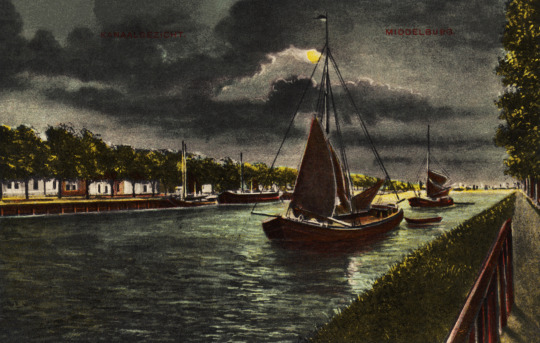
Middelburg. Kanaalgezicht.
1 note
·
View note
Text

Town Hall of Oud-Vossemeer, on the island of Tholen in the Dutch province of Zeeland, Netherlands
Dutch vintage postcard
#hall#island#zeeland dutch#tholen#briefkaart#town#carte postale#province#vossemeer#postal#historic#ephemera#zeeland#photo#postkarte#dutch#photography#sepia#vintage#ansichtskarte#tarjeta#oud#old#town hall of oud-vossemeer#postcard#postkaart
5 notes
·
View notes
Text
niche complaint time:
the people that insist that new zealand is named after danish islands instead of dutch islands after being mapped by dutch sailor abel tasman, who is the namesake of the tasman sea and tasmania, and called australia new holland continues to make me unreasonably angry.
side note i over did it in the tags im sorry
#its like#to the west west dutch#to west west south is dutch#to the west dutch#WERE DANISH#the danish were more interested in their immediate area and greenland and iceland#they had no business in the southern hemisphere#the closest is german new guinea#like i know its zealand vs zeeland but fr the danish had their sights to the north#also yes its new zealand (for the zeeland province) and new holland (for the holland north/south provinces)#much like new york was new amsterdam#also it took me to the last month to find out that nutmeg was from islands to the north of australia and west of west papua#and likely have common ancestors in both from the sahul days
0 notes
Text

Two F-15's of the 32nd FS Wolfhounds and a F-16 from the RNLAF with 40 years anniversary tail from 314 squadron in formation flying over the province of Zeeland, the Neterlands photo made by the RNLAF photo flight section. #F15 #F15Eagle #USAF #McDonnellDouglasF15 #32TFS
@Skytrailerdotnl via X
#f 15c eagle#mcdonnell douglas aviation#fighter#usaf#f 16 fighting falcon#lockheed aviation#general dynamics aviation#netherlands#aircraft#cold war aircraft#aviation
47 notes
·
View notes
Text
Terp/Thorp/Wierde/Warft/Værft

Most commonly known as “Terp”, by origin a Frisian word, Terps are actually known in a few places. Hang on tight, this is a long one.
The water rich lands of Dutch provinces Zeeland/Frisia (Terp) and Groningen (Wierde) - German regions Nordfriesland and Ostfriesland (Warft) and southern Denmark (Wærft) were in need of such constructions for basic quality of life.
Because the tides could freely enter the lower lands beyond the shoreline, life was to be lived intermittently. When the land was dry, sheep could graze the salt marsh. When water rose, people would retreat to the Terp.
A Terp can be made up out of a single church or farm/house to an entire small village. Concentrations of small Terps making up a village also exist. They are often surrounded by a salt marsh rampart (Kwelderwal).
Terps were made by plaggen. The top of sandy soils was taken out in little cubes, including the vegetation. The plag was then dried and compacted and stacked on top of each other, which causes an artificial hill allowing to build on.
Terp is also the Old-Frisian word which originates the Dutch word for village. Frisian culture allowed to spread because of their specialization in sheep’s wool. With most agricultural crops not being suited for salt marshes, and with the land flooded half of the day, lots of time was spent in producing high quality and highly sought after wool. This made the Frisians and especially the Terp people very rich, as seen in treasures, burials and clerical art.
Lots of Terps have been destroyed for peat mining or lost after abandonment.
Image above: Hogebeintum (Hegebeintum (Frisian), formerly known as Westerbintheim).
The largest known Terp in the Netherlands and Germany with 8,80 m above sea level.
Central is the church, on the right the historic village, the sheep pastures during floods and the encircling salt march rampart. Everything outside the rampart used to flood.
#frankish#merovingian#viking archaeology#archaeology#carolingian#charlemagne#field archaeology#viking mythology#merovingian archaeology#germanic mythology#norse mythology#anglo saxon#viking#field archaeologist#frisian#odin#vikings#germanic#germanic folklore#germanic archaeology#wodan#anglo saxon archaeology#history#jewelry#norse
37 notes
·
View notes
Text

Portrait of Prince Willem II (1626-1650
Artist: Workshop of Gerard van Honthorst (Dutch, 1592–1656)
Date: After 1647
Medium: Oil on canvas
Collection: Mauritshuis, The Hague, Netherlands
William II, Prince of Orange
William II (27 May 1626 – 6 November 1650) was sovereign Prince of Orange and Stadtholder of Holland, Zeeland, Utrecht, Guelders, Overijssel and Groningen in the United Provinces of the Netherlands from 14 March 1647 until his death three years later on 6 November 1650. His death marked the beginning of the First Stadtholderless Period, leading to the rise of Johan De Witt, who stayed in power for the next 22 years.
#portrait#man#standing#prince willem ii#prince of orange#stadtholder of holland#dutch golden age#gerard van honthorst#dutch painter#netherlandish#classic pillar#uniform#blue sash#sword#cloudy skys#17th century painting#artwork#oil on canvas#oil painting#seventeen century
8 notes
·
View notes
Photo
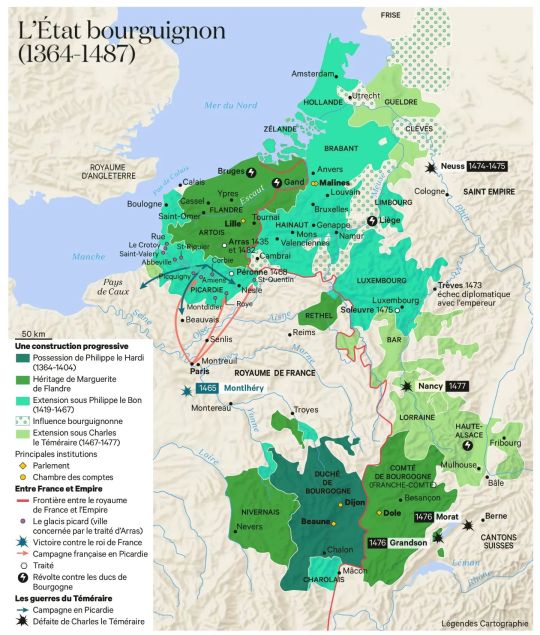
The Burgundian state, 1364-1487.
« Atlas historique mondial », Christian Grataloup, Les Arènes/L'Histoire, 2e éd., 2023
by cartesdhistoire
In 1363, the king of France, John the Good, gave Burgundy as an appanage to his son Philippe the Bold. Duke until 1404, he became master of a vast area, including Charolais, Artois, Franche-Comté, Rethel, Nevers and Brabant. His power made Flanders independent and it was a solid base for expansion in the Empire, continued by Duke Philip the Good (1419-1467): Namur, Hainaut, Holland, Zeeland and Luxembourg ( in addition to a nebula of satellites like the ecclesiastical principalities of Liège, Utrecht and even Cologne).
The Burgundian “State” is therefore made up of two blocks of territories, both shared between France and the Empire: Burgundy (France) and Franche-Comté (Empire) are governed from Dijon; from Lille then from Brussels from 1430, Flanders, Artois (France) and the Netherlands (Empire). The frequent meeting of States within the framework of each province allows regular taxation, which makes the Duke one of the richest sovereigns in the West, the bulk of his income coming from Flanders and the Netherlands. The administrative structure is close to that of the French monarchy (aids, Chambers of Accounts, states, Parliament).
Duke Charles the Bold (1467-1477) tried to reunite the two blocks, barely 60 km apart after 1441. He centralized, increased taxes and borrowed enormous sums from banks to obtain an imposing army and artillery. He then aimed for Lorraine and the archbishopric of Cologne but his ambitions united his enemies against him: Louis XI, the emperor, Lorraine, Savoy and the Swiss. In 1475, the Swiss crushed Charles's army at Grandson and Morat then the duke died in 1477, trying to retake Nancy. He is succeeded by his daughter Marie who married Maximilien, son of the emperor. She died on March 27, 1482 and on December 23, the Treaty of Arras divided her inheritance between Valois and Habsburg.
44 notes
·
View notes
Text
So last night as I was starting to slowly drift off to sleep, my brain suddenly stuck on something (I promise this is Temeraire related). You see, the Netherlands have used "can't get an army across lots of water" as a basic defence strategy pretty much from Roman times until we got airplanes. The extent of it has varied; sometimes it was as simple as "well the river is too big" (Romans), sometimes it was "if we break this dike right here, the polder will flood and the Spanish can't get at the city". But, from the end of the 17th century, there was a systematic line of forts along the polders and rivers that could protect the province of Holland (specifically), here shown in purple. To the south there's big rivers leading into an estuary, and then it protects the province from invasion to the east. From about 1870, it was replaced by the orange parts, as well as the brownish line around Amsterdam specifically. The yellow area is from the mid-18th century. It is basically a collection of forts, and a series of locks. Together, these can make it so the coloured areas flood to a depth of 30-60 cm. Too deep for infantry, not deep enough for boats. It protects the capital of Amsterdam (with its important harbour), and the big cities of The Hague, Utrecht and Rotterdam.

And again, until we developed airplanes and parachutists and airplane bombs and so on, this worked really well.
Now, since I've been rereading the Temeraire books, the drifting off to sleep made me suddenly realise - how would dragon aerial warfare interact with this? Which morphed into a discussion with my partner (who hasn't read the books) about how Dutch dragons would work.
The first thing I'd like to do is point out the size of the Netherlands, compared to the British Isles and to the United States:


In other words, very small. And, very importantly, it used to be even smaller; a lot of the current land was reclaimed from the sea or large lakes between roughly 1650 and 1950. Most of the west of the country is below sea level, and very wet. A fair part of the east of the country isn't very rich soils and thus not great for farming (until chemical fertiliser is invented in the 1900s) (though they did use sheep dung as fertiliser, and they would almost certainly have thought of using dragon dung as well, eventually).
So I propose that actually, the Netherlands probably would have mostly had middle- and lightweights. There just isn't the area to support a large enough population of heavyweights that they aren't all inbred. My partner suggested there is probably one heavyweight breed, and I like that idea. I think that - militarily - the Netherlands would probably have figured out a strategy for using middle-weights against heavy-weights when they are fighting alone, but preferentially use their middle-weights as support in battles when there is a larger coalition, joining whoever is on their side.
However. There may only be middle-weight dragons, there would be a fairly large number of different breeds, with different strengths. You see, unlike the United Kingdom, where England was mostly united by around 900 CE, and then the Normans strengthened that, or France, which has a similar time scale, the Netherlands is a collection of loose duchies and counties and prince-bishoprics and so on, pretty much until the 1550s. The map pictured is from 1670, after a fair amount of the lands have been united into a republic; there would likely have been more divisions before then.
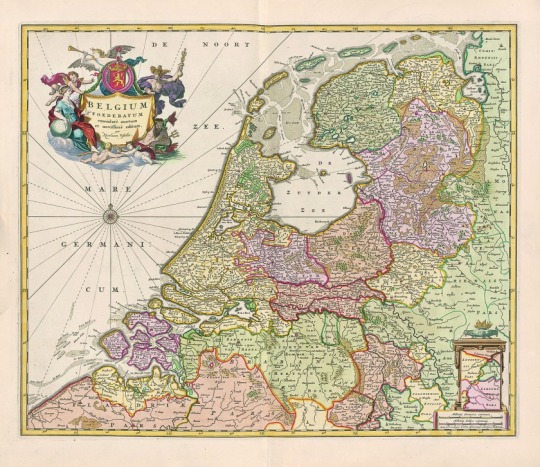
They get united under the dukes of Burgundy, eventually, but even at that time, it is still the Duchy of Brabant and the County of Holland and so on. But until they come together against Spanish rule, the separate parts regularly fight with each other. Which means that each of them would have their own breeds. (Likely, Holland and Zeeland would have very similar dragons, with aquatic adaptations, who get fed on a mixture of fish and meat; the more inland regions would have more "standard" breeds. To outsiders they all look incredibly alike, but if you mention to someone from Guelders that you cannot tell their Zwarte van Gelre apart from the Brabants Blauwtje, they would be so insulted. Can you not tell that theirs is a pure midnight black while the Brabants Blauwtje is blue? However, the breeds are so alike that most of them follow a continuum. Except the Fryske Grutskens, which looks very distinct). This is also where the single heavy-weight breed comes in - I think it would have been Flanders. Flanders is a part of the kingdom of France (rather than the Holy Roman Empire, which is the power the rest of the motley collection belongs to). One of the counts of Flanders probably got a breeding pair of heavy-weights from the king of France; maybe during one of the (many) revolts. These were crossed with the native middle-weights until a new breed of heavy-weights was developed. And finally, purely for my own amusement, William the Silent/William of Orange, who led the 1548 revolution against the Spanish, would have a dragon that is actually orange. No one knows how or why it came out that colour, none of its progenitors was, it just did and he was named for it (the fact that he is Prince of Orange is a bonus).
I also think that the Dutch would be using dragons for shipping, at least within the country. It is efficient and cheap (especially the dragons that grew up having fish as part of their diet), and the Dutch have always been fans of efficient and cheap and trade. And since it's all middle-weights, that is less scary than heavyweight breeds dropping in. I don't think dragons would be used for passenger-work, but loading the big ships, that can't quite reach the harbour? Definitely. And if you have large-ish ships, but only middle-weight dragons, it's probably much easier to ship dragons across the world, so you can also have a dragon when you arrive at your destination.
To bring it back to the idle thought that started this all - the Waterlinie, aka using the water to prevent invasion. My partner and I think it would still have worked, mostly. The Romans start taming the native European breeds, so they probably could cross the Rhine. In our world, the Rhine was the limes, the border, because they can't cross it in large enough numbers; but if they have dragons and the native Germanic tribes don't, then they can. I don't think they'd have been able to hold the land, not for long, and it's not interesting enough to bother anyway. But after that, when the playing field is levelled by everyone having dragons, the water would still be a workable defence. Yes, the aerial forces can come over and wreak havoc - except everyone has dragons now and so they will try to defend it - but the infantry still has trouble crossing the water. And then, when artillery gets developed, it's still the same. You can shoot at the enemy dragons, they can shoot at yours - and the infantry still can't cross the water. I think an enemy (often the French) would try to use dragons against the forts, before they can inundate the land, but that it wouldn't work as well after.
Anyway, here are some rambly thoughts about Dutch dragons in the Temeraire universe. (Sidenote but I can't make heads nor tails of the Dutch names that are used once or twice in the books. They just don't work.)
#lioness rambles#temeraire#many thoughts about dutch dragon breeds apparently#and some about strategy#and about history#can you tell that any time i read or reread those books my brain gets consumed by them#long post
14 notes
·
View notes
Text










King Willem-Alexander and Queen Máxima of the Netherlands during their visit to the region of Walcheren in the province of Zeeland on Tuesday, where they learned more about the development of the district and the constructions that are being carried out to modernise and urbanise the area. August 27, 2024.
📷 hola.com
5 notes
·
View notes
Text
Mina en Mevrouw
Wanted to share this podcast! It's not very simple Dutch, but if you just want to listen to more Dutch (or are Dutch), I really recommend it!
It's about the lives of Mina en Mevrouw (madam). Mevrouw is a gravin (countess seems to be about the equivalent) in the province Zeeland and Mina started working for her as an inwonende dienstbode (live in maid) in 1937.
It's about history, personal lives, class differences and episode 6 (mostly that one) talks about sexuality. There's also a bit about the second world war. The story is told through diary entries by Mevrouw, interviews with the family of both women (the podcast maker is family of mevrouw), and interviews with experts about certain topics.
Give it a listen at:
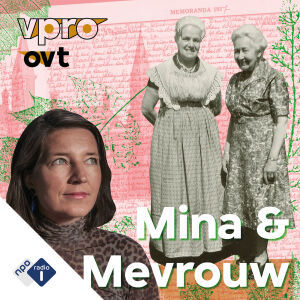
6 notes
·
View notes
Text

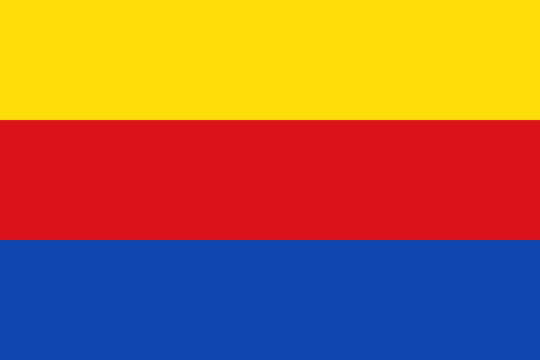
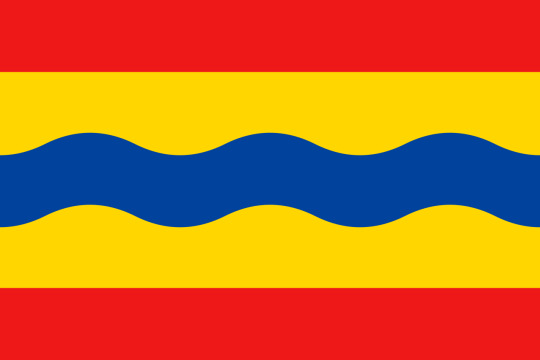


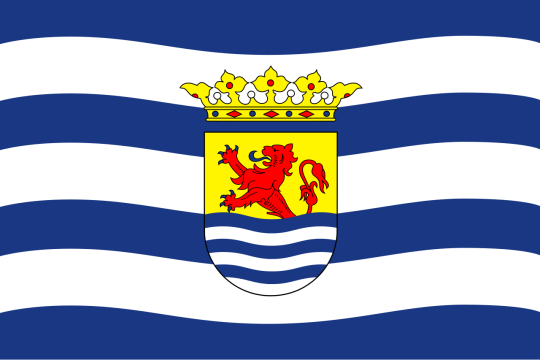
Flag Wars Bonus Round
3 notes
·
View notes
Note
if you're still taking questions from the non us asks:
7. three words from your native language that you like the most?
Enne
This is technically a term that's only used in the southern provinces of the Netherlands (except... maybe Zeeland? I actually do not know. @cerriddwenluna help me!). I actually didn't know enne was southern till a few years ago, after I moved to the east, because I use it all the time. Enne is so versatile. Depending on the context or tone, it could mean:
"How are you?"
"What happened?"
"WHAT THE FUCK?"
"Oh, really?"
"Did it work?"
"I didn't know that! Tell me more!"
and probably more.
Kut
It has recently made the rounds on tumblr in a swearing bracket and yes, kut is great. It's just very easy to say as a swear. I suppose the best way to translate it, is cunt, but that also doesn't feel right, because kut and cunt are used in different ways. You can also add kut to other words to drive your angry point home.
Gezellig
Yes, I know, it's the Dutch word. It's famous because there is not appropriate English translation for it and I do like that. Gezellig is a vibe of being together with people you love and having fun.
Thanks for asking! Or as we say, dank je wel!
3 notes
·
View notes
Text
americans specifying only states are stupid. "but they'll know it's the us!" georgia.
like saying a dutch province too, no one knows gelderland.
and there's also zeeland.
2 notes
·
View notes
Note
Water Land- Atlantis or Water Country (Reference to the amusement park)
Earth Land- Terra
Air Land- Cloud Nine
Nice!
I can also see Waterland be called Oceania (referencing the continent) or Sealand (referencing the Dutch province Zeeland), but Atlantis is very fitting too!
Also, I can see Air-people have a city somewhere called Cloud City (definitely not a Star Wars reference) :)
4 notes
·
View notes
Text
A little over a year ago I was researching folkloric creatures for inspiration for my audio drama. One of my finds was Ossaert, a sort of undead water demon dog from the Dutch province of Zeeland. I had come across it by doing the broadest of searches in Google. Really, Google was doing the research for me.
Then a few months ago I wanted to reference Ossaert, except I had forgotten its name. "No problem," I thought, and promptly searched for something along the lines of "Dutch folklore undead dog."
Google gave me five (5) links to different web stores with dog in their name, followed by a link to an article about vampires.

55K notes
·
View notes
Text
Dutch Bridges: A Journey Through Design, History, and Connection
In the Netherlands, bridges and aquaducts are more than just ways to get from A to B—they’re architectural icons blending function with style and, in some cases, a profound historical legacy. Dutch bridges are distinct, not only in design but also in their role connecting people and places. Whether you’re in Rotterdam, Amsterdam, Utrecht, Arnhem, Maastricht or in the province Zeeland, Dutch…
#Dutch#DutchCulture#DutchLanguage#Holland#Incompanytraining#Nederland#Nederlands#PrivateTutor#theNetherlands#TutorDutch
0 notes